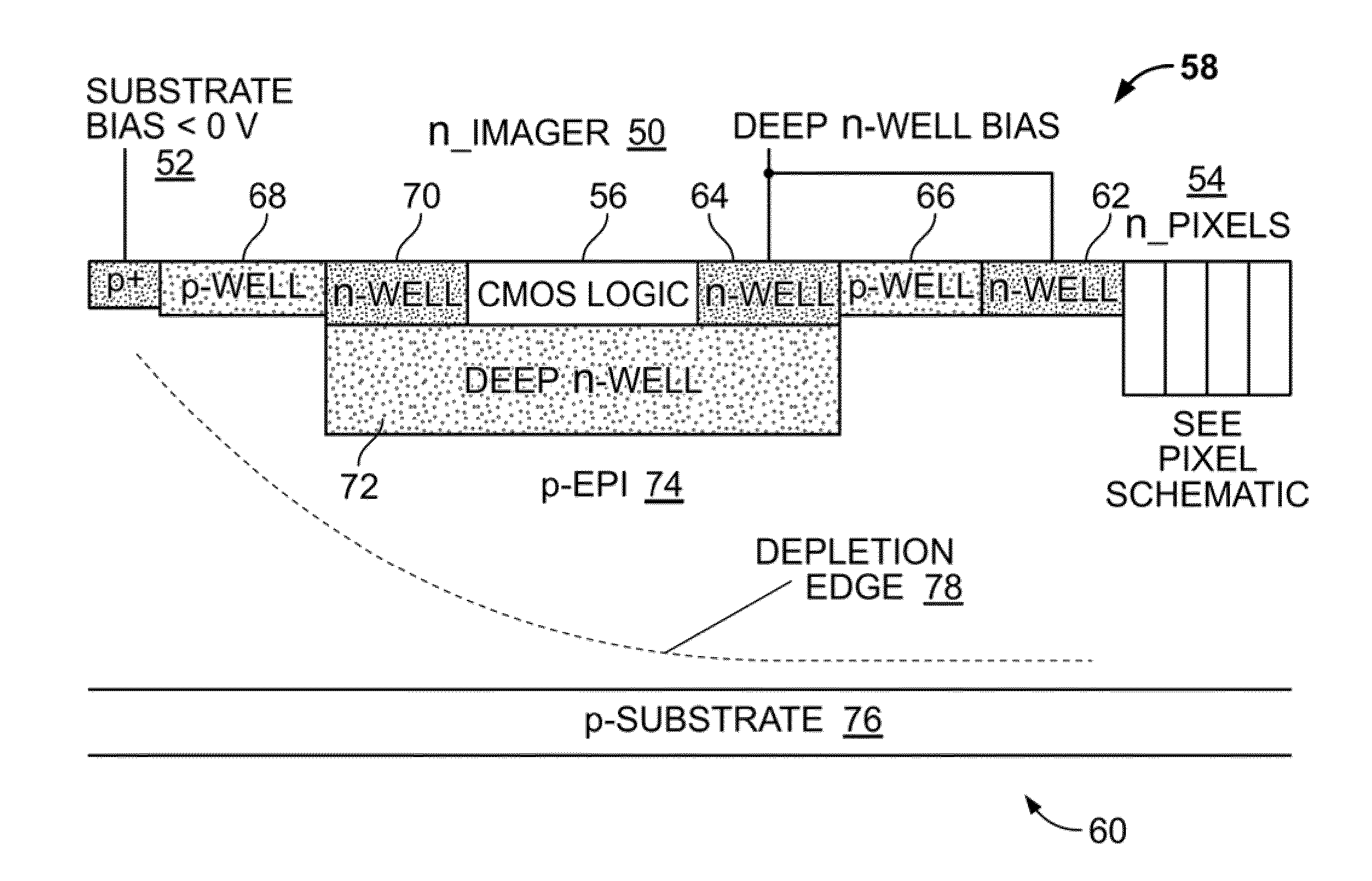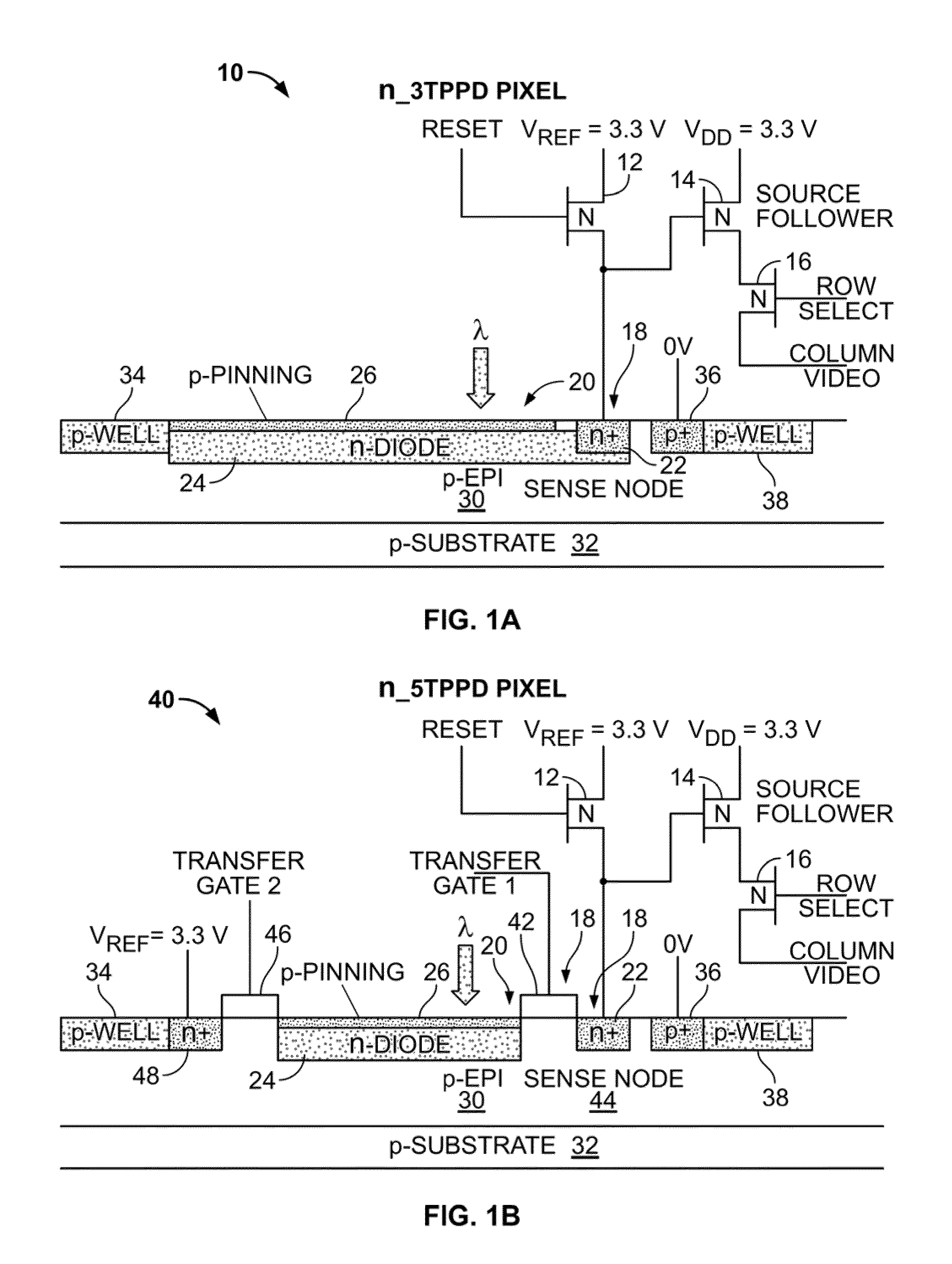Substrate bias for CMOS imagers
a cmos imager and substrate bias technology, applied in the field of imaging devices, can solve the problems of high manufacturing cost of ccds, ccd imagers suffer from a number, and ccds are susceptible to radiation damag
- Summary
- Abstract
- Description
- Claims
- Application Information
AI Technical Summary
Benefits of technology
Problems solved by technology
Method used
Image
Examples
Embodiment Construction
[0057]FIGS. 2A and 2B are cross-sectional views of CMOS pixels having substantially corresponding structures to the pixels of FIGS. 1A and 1B with doping conductivity types reversed, according to an embodiment of the present invention. The CMOS pixels are hereinafter designated as p—3TPPD and p—5TPPD pixels, 10′, 40′, respectively. The p—3TPPD pixel 10′ includes three PMOS transistors 12′, 14′, 16′ standing for a reset transistor 12′, a source follower transistor 14′ and a row transistor 16′. The reset transistor 12′ is electrically connected to a sense node 18′. The sense node 18′ is formed of a p+ contact 22′ and a pinned photodiode 20′. The pinned photodiode 20′ includes a thin n-type pinning layer 26′ overlying a custom p-diode implant 24′, that in turn, overlies and forms a depletion region with an n-epitaxial layer 30′. An n-substrate 32′ underlies the n-epitaxial layer 30′. An n-well 34′ is formed adjacent the pinned photodiode 20′ in the n-epitaxial layer 30′ for isolating t...
PUM
 Login to View More
Login to View More Abstract
Description
Claims
Application Information
 Login to View More
Login to View More - R&D
- Intellectual Property
- Life Sciences
- Materials
- Tech Scout
- Unparalleled Data Quality
- Higher Quality Content
- 60% Fewer Hallucinations
Browse by: Latest US Patents, China's latest patents, Technical Efficacy Thesaurus, Application Domain, Technology Topic, Popular Technical Reports.
© 2025 PatSnap. All rights reserved.Legal|Privacy policy|Modern Slavery Act Transparency Statement|Sitemap|About US| Contact US: help@patsnap.com



